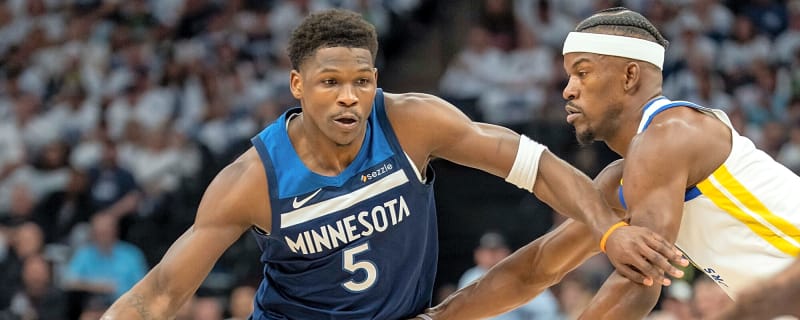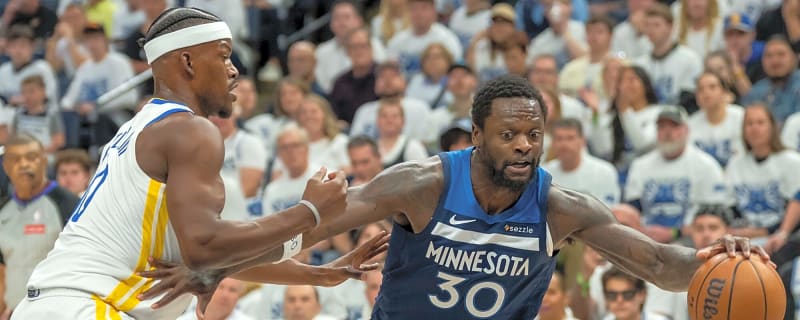- Home
- Quizzes
- My Quiz Activity
- Newsletters
- MY FAVORITES
- Add Sports/Teams
- SPORTS
-
NFL
- NFL Home
- Arizona Cardinals
- Atlanta Falcons
- Baltimore Ravens
- Buffalo Bills
- Carolina Panthers
- Chicago Bears
- Cincinnati Bengals
- Cleveland Browns
- Dallas Cowboys
- Denver Broncos
- Detroit Lions
- Green Bay Packers
- Houston Texans
- Indianapolis Colts
- Jacksonville Jaguars
- Kansas City Chiefs
- Las Vegas Raiders
- Los Angeles Chargers
- Los Angeles Rams
- Miami Dolphins
- Minnesota Vikings
- New England Patriots
- New Orleans Saints
- New York Jets
- New York Giants
- Philadelphia Eagles
- Pittsburgh Steelers
- San Francisco 49ers
- Seattle Seahawks
- Tampa Bay Buccaneers
- Tennessee Titans
- Washington Commanders
-
MLB
- MLB Home
- Athletics
- Arizona Diamondbacks
- Atlanta Braves
- Baltimore Orioles
- Boston Red Sox
- Chicago White Sox
- Chicago Cubs
- Cincinnati Reds
- Cleveland Guardians
- Colorado Rockies
- Detroit Tigers
- Houston Astros
- Kansas City Royals
- Los Angeles Angels
- Los Angeles Dodgers
- Miami Marlins
- Milwaukee Brewers
- Minnesota Twins
- New York Yankees
- New York Mets
- Philadelphia Phillies
- Pittsburgh Pirates
- San Diego Padres
- San Francisco Giants
- Seattle Mariners
- St. Louis Cardinals
- Tampa Bay Rays
- Texas Rangers
- Toronto Blue Jays
- Washington Nationals
-
NBA
- NBA Home
- Atlanta Hawks
- Boston Celtics
- Brooklyn Nets
- Charlotte Hornets
- Chicago Bulls
- Cleveland Cavaliers
- Dallas Mavericks
- Denver Nuggets
- Detroit Pistons
- Golden State Warriors
- Houston Rockets
- Indiana Pacers
- Los Angeles Clippers
- Los Angeles Lakers
- Memphis Grizzlies
- Miami Heat
- Milwaukee Bucks
- Minnesota Timberwolves
- New Orleans Pelicans
- New York Knicks
- Oklahoma City Thunder
- Orlando Magic
- Philadelphia 76ers
- Phoenix Suns
- Portland Trail Blazers
- Sacramento Kings
- San Antonio Spurs
- Toronto Raptors
- Utah Jazz
- Washington Wizards
-
NHL
- NHL Home
- Anaheim Ducks
- Boston Bruins
- Buffalo Sabres
- Calgary Flames
- Carolina Hurricanes
- Chicago Blackhawks
- Colorado Avalanche
- Columbus Blue Jackets
- Dallas Stars
- Detroit Red Wings
- Edmonton Oilers
- Florida Panthers
- Los Angeles Kings
- Minnesota Wild
- Montreal Canadiens
- Nashville Predators
- New Jersey Devils
- New York Islanders
- New York Rangers
- Ottawa Senators
- Philadelphia Flyers
- Pittsburgh Penguins
- San Jose Sharks
- Seattle Kraken
- St. Louis Blues
- Tampa Bay Lightning
- Toronto Maple Leafs
- Utah Mammoth
- Vancouver Canucks
- Vegas Golden Knights
- Washington Capitals
- Winnipeg Jets
- NCAAF
- NCAAM
- Olympics
- Boxing
- Entertainment
- Lifestyle
- Golf
- MMA
- Soccer
- Tennis
- Wrestling
- Sports Betting
- More Sports
- RESOURCES
- My Account
- YB on Facebook
- YB on Twitter
- YB on Flipboard
- Contact Us
- Privacy Policy
- Terms of Service
Pope Leo XIV's three surprising connections to the sports world
A pope seems like he would have no connections to the sports world, but that's not the case with Prevost. With that in mind, here are three.

Timberwolves bounce back with emphatic Game 2 win over Steph Curry-less Warriors
The Wolves started Game 2 on a 13-0 run and never trailed in their 117-93 win to even the series.

Jayson Tatum's wrist may be a bigger problem than we know
In the opening game of the Boston Celtics' playoff run, Tatum suffered a bone bruise to his shooting wrist.

LeBron James tries to explain Lakers' embarrassing playoff exit
LeBron James offered his own explanation for why his Los Angeles Lakers fell so early.

The 'Most points in the 2022-23 NBA playoffs' quiz
During the 2022-23 NBA playoffs, 32 players scored 200 or more points. How many can you name in five minutes?

One change the WNBA should make to shed minor league feel
Since the arrival of Caitlin Clark, the WNBA has experienced a meteoric rise in popularity. It's time for the league to make this one change that will help it shed the feel of a minor league enterprise.

Three stars from Thursday's NBA playoff game: Veteran reminds us why he's a three-time All-Star
The Minnesota Timberwolves started fast, led all the way and evened their second-round series with the Golden State Warriors.
Watch: Draymond Green moves closer to suspension with another playoff tech
The Warriors are already without Stephen Curry, and Draymond Green got closer to joining him on the bench.

Celtics are winning the efficiency battle but are still losing games
The Boston Celtics dropped two home games to start their second-round series while shooting 100 three-pointers and making 25% of them. Their head coach insists they were just taking "good looks."
The 'Best plus/minus in an NBA playoff game' quiz
21 players have posted a +/- (measuring the scoring difference between teams while that players in on the court) of 40 or better. How many of them can you name in five minutes?

Two stats proving Knicks have been NBA's most clutch playoff team
Numerous factors can explain why the Knicks keep winning games, but one stands out: their repeated ability to come up big down the stretch.

Who needs to step up for injury-ravaged Cavs?
With injuries piling up and facing a 2-0 deficit, the Cavs need someone to step up immediately.

Jayson Tatum is failing Celtics right now
Tatum needs to step up on multiple levels for the Celtics to come back and win their Eastern Conference semifinals series against the Knicks.

Why Knicks owe Pistons gratitude for playoff success
In the first round, the Knicks played four consecutive games decided by three or fewer points. They were forced to dig deep and match the Pistons' physicality, the trial by fire that prepared them for the Celtics.

NBA Rewind: Derrick Rose stuns LeBron James, Cavaliers with game-winning three
On May 8, 2015, Rose and the Chicago Bulls found themselves matched up with the Cleveland Cavaliers in the Eastern Conference semifinals.

Celtics make unwanted NBA history in Game 2 collapse
The C's blew a 20-point lead for a second consecutive game against the Knicks to fall to a 2-0 hole in the Eastern Conference semifinals.

Celtics must embrace attacking the paint
The Celtics came into the season as the reigning NBA champions. If they want to defend that title, they must adjust.

What 2-0 hole? Here come the Road Celtics
Their 22-9 road record over the last three postseasons is tied for the best in NBA history over a 31-game span.

Every record Thunder broke in historic rout of Nuggets
When the top-seeded Thunder obliterated the Nuggets in Game 2 on Wednesday, they demonstrated they're not the 2007 Mavericks or 2015 Hawks — a regular-season juggernaut that fizzles out in the playoffs.

Five incredible notes from the NBA playoffs so far
The 2025 NBA playoffs are barely at the midway point, yet they've already been highly entertaining.

'Overrated' Tyrese Haliburton starring again in NBA playoffs
An anonymous survey of NBA players voted Haliburton the NBA's "Most Overrated" player. After the last three weeks of the playoffs, no one is calling him overrated anymore.

Celtics' Mitchell Robinson strategy blows up in their face
The Boston Celtics resorted to a "hack-a-" strategy on Mitchell Robinson in the second half of their Game 2 loss.

Former Celtics great makes regrettable promise about Game 2
Unfortunately for him, the New York Knicks rallied from 20 points down to beat the Celtics in Boston, 91-90.

Thunder blow out Nuggets to even second-round series
The Oklahoma City Thunder lost a 13-point fourth-quarter lead in their Game 1 loss to the Denver Nuggets. Wednesday night, they decided to build an insurmountable lead right away.

Steph Curry injury might not doom Warriors — but it doesn't help
Can the Warriors stay afloat while Curry is out?

Ranking the five game-winners of the 2025 NBA playoffs
We rank the clutch shots based on stakes involved, wow factor and degree of difficulty.
Breaking News
Trending News
My Favorites
Customize Your Newsletter
 +
+
Get the latest news and rumors, customized to your favorite sports and teams. Emailed daily. Always free!
PRIVACY POLICY EDITORIAL POLICY CONTACT US
ABOUT YARDBARKER TERMS OF SERVICE
Use of this website (including any and all parts and
components) constitutes your acceptance of these
Terms of Service and Privacy Policy.
This site is for entertainment purposes only.
There is no gambling offered on this site.
Gambling Problem? Call 1-800-Gambler.

 Free Newsletters
Free Newsletters













